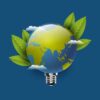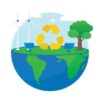Airborne Wind Energy Equipment Market Summary:
Airborne wind energy (AWE) is a promising technology that harnesses wind power using flying devices such as kites, drones, or tethered balloons. These devices are equipped with turbines or generators that convert the kinetic energy of the wind into electricity. The airborne wind energy equipment market is experiencing significant growth due to the increasing demand for renewable energy sources. One of the key advantages of airborne wind energy equipment is its ability to access stronger and more consistent winds at higher altitudes. Traditional wind turbines are limited by their height, but AWE devices can reach greater heights, where wind speeds are higher and more reliable. This makes them more efficient and productive in generating electricity. Airborne wind energy equipment offers flexibility in terms of deployment. They can be easily transported and installed in remote or offshore locations, where traditional wind turbines are not feasible. This opens up new opportunities for renewable energy generation in areas with limited land availability or challenging terrains.
The market for airborne wind energy equipment is also driven by the growing concerns about climate change and the need to reduce greenhouse gas emissions. Governments and organizations worldwide are increasingly investing in renewable energy sources to meet their sustainability targets. AWE technology presents a viable alternative to fossil fuels, contributing to a greener and cleaner future. The airborne wind energy equipment market is witnessing rapid growth due to its advantages in accessing stronger winds, flexibility in deployment, and contribution to sustainable energy generation. As the demand for renewable energy continues to rise, AWE technology is expected to play a significant role in meeting the world’s energy needs while reducing environmental impact.
Airborne Wind Energy Equipment Market Overview:
The Airborne Wind Energy Equipment Market overview provides a comprehensive understanding of the analyzed market. It includes an introduction to the market, its size, growth rate, and key trends. This aims to give clients a broad understanding of the market landscape. The market analysis of the Airborne Wind Energy Equipment Market delves deeper into the market dynamics, focusing on factors such as market drivers, challenges, and opportunities. It explores the macroeconomic and microeconomic factors affecting the market, industry regulations, and emerging market trends. The analysis provides valuable insights into the current and future market conditions.
The assessment of the Airborne Wind Energy Equipment Market is performed by taking various factors into consideration, like, for instance, the business expansion policies of key players, competitive analysis of the progress of new entrants and emerging players, and the revenue, financial, and opportunity analysis of market players. The also analyzed based on regional segmentation, type or technique, end-user spectrum, etc. This research implements the latest methodologies to help clients understand the overall market scenario and strategize accordingly. The Airborne Wind Energy Equipment Market report provides an overview of the different types of analysis conducted during the market research process, including but not limited to SWOT analysis, Porter's Five Forces analysis, PESTLE analysis, and market forecasting. These analyses provide a deeper understanding of the market dynamics and assist in making informed business decisions.
Major players included in the Airborne Wind Energy Equipment Market:
- Bruce Banks Sails
- National Wind Tunnel Facility (NWTF)
- Innovate
- BVG Associates
- e-Kite
- Bladetips Energy
- EnerKite
- e-Wind Solutions
- Open Source AWE
- Pierre Benhaiem
- Rotokite
Airborne Wind Energy Equipment Market Segmentation:
By Type
- Aerostat and autogiro
- Tethered Devices
- Passive Tether Formats
By Application
- Energy
- Defence
- Commercial
- Others
Future Market Analytics Focus Points:
- SWOT Analysis
- Key Market Trends
- Key Data -Points Affecting Market Growth
- Revenue and Forecast Analysis
- Growth Opportunities For New Entrants and Emerging Players
- Key Player and Market Growth Matrix
Airborne Wind Energy Equipment Market Competitive Analysis:
The competitive analysis of the Airborne Wind Energy Equipment Market assesses the competitive landscape of the market. It includes evaluating key players in the industry, their market share, business strategies, and competitive advantages. The competitive analysis also highlights the strengths and weaknesses of major competitors, allowing clients to understand the competitive positioning of companies operating in the market.
Objectives of the Study:
- To provide a comprehensive analysis on the Airborne Wind Energy Equipment Market by segmentation and by region
- To cater extensive insights on factors influencing the market growth (drivers, restraints, industry-specific restraints, business expansion opportunities)
- To anticipate and analyse the market size expansion in key regions- North America, Europe, Asia Pacific, Latin America and Middle East and Africa
- To record and evaluate competitive landscape mapping- strategic alliances and mergers, technological advancements and product launches, revenue and financial analysis of key market players
How our market research reports help clients:
Our market research reports provide valuable insights to clients in their decision-making process and support their growth and market capture efforts. They offer:
- Comprehensive understanding of market trends, dynamics, and growth potential.
- Identification of niche markets and emerging opportunities.
- Assessment of competitive landscape and strategic benchmarking.
- Insights into consumer preferences, buying behavior, and market demand.
- Risk assessment and mitigation strategies.
- Market forecasting and trend analysis for informed business planning.
- Understanding product development, pricing, and other strategies.
In case of any specific requirements or changes to the current table of content based on your scope, please contact us at: enquiry@futuremarketanalytics.com






















